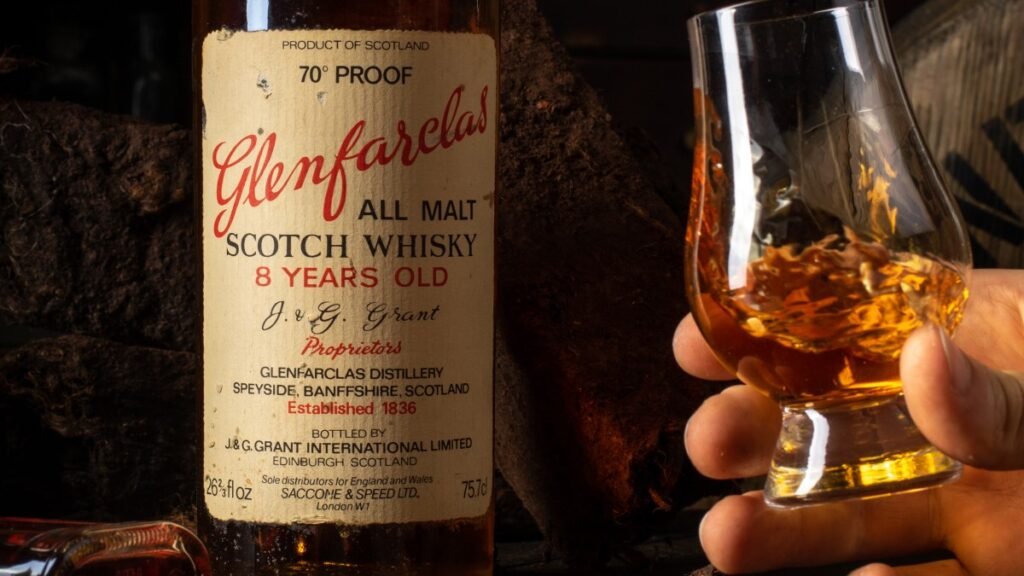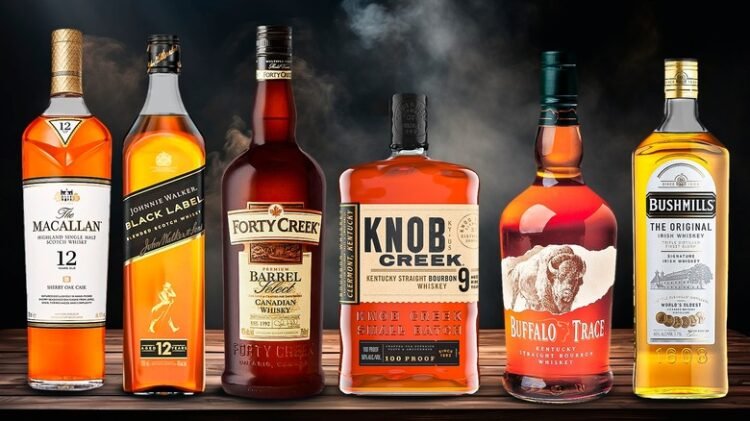When it comes to whiskey, two of the most iconic and revered styles are Scotch and Irish whiskey. Although both types of whiskey have their roots in similar traditions, they are distinct products with unique characteristics shaped by geography, ingredients, production methods, and cultural influences. In this article, we will explore the key differences between Scotch and Irish whiskey, delving into their history, production processes, flavor profiles, and why aficionados can often taste the difference between the two. Whether you’re a seasoned whiskey drinker or new to the world of spirits, understanding these differences can elevate your appreciation of both Scotch and Irish whiskey.
The History and Origins of Scotch and Irish Whiskey
Both Scotch and Irish whiskey have ancient roots that trace back to the early centuries of distillation. However, the paths they took to become the iconic spirits we know today differ in significant ways.
The Origins of Scotch Whisky
Scotch whisky, or “Scotch,” has a rich and storied history that dates back to the 15th century in Scotland. The earliest recorded references to whisky in Scotland date back to 1494, and it was initially produced by monks who were responsible for distilling spirits. Over time, the art of whisky making was passed down to local distillers, who began to refine their craft. The unique characteristics of Scotch whisky were shaped by the cold, wet climate of Scotland and the abundant natural resources, such as barley, peat, and water from the country’s rivers.
The Scotch whisky industry grew steadily over the centuries, and in the 19th century, the development of the Coffey still made large-scale production more efficient. Today, Scotch whisky is protected by strict regulations that require it to be distilled and aged in Scotland. To be legally considered Scotch whisky, the spirit must be aged in oak barrels for a minimum of three years.
The Origins of Irish Whiskey
Irish whiskey, on the other hand, has a long and distinguished history that also dates back to ancient times. The earliest records of whiskey production in Ireland date back to the 12th century, and similar to Scotch, the first distillers were monks. However, Irish whiskey began to gain prominence in the 17th century when it became a popular spirit in both domestic and international markets.
Irish whiskey’s production methods have evolved over time, with the use of copper pot stills and a unique triple-distillation process helping to define its smooth and mellow character. Unlike Scotch, which was historically made with malted barley, Irish whiskey has traditionally used a combination of malted and unmalted barley, which influences the flavor profile. Today, Irish whiskey is also legally required to be distilled and aged in Ireland for at least three years.
Key Differences in Production: Malt vs. Grain, Distillation, and Aging
The differences in the production processes of Scotch and Irish whiskey are crucial in determining the final flavor profiles of these two spirits. Let’s take a closer look at the primary factors that differentiate the two.
Barley: The Heart of the Whiskey
One of the most fundamental differences between Scotch and Irish whiskey is the type of barley used in production.
- Scotch Whisky: The vast majority of Scotch whiskies, particularly single malts, are made from malted barley. In some cases, Scotch whisky may also contain other grains, such as wheat or corn, especially in blended whiskies. The use of 100% malted barley is a defining characteristic of many Scotch whiskies, which often have a rich, robust, and sometimes smoky flavor profile.
- Irish Whiskey: Traditional Irish whiskey is often made with a combination of malted and unmalted barley. The inclusion of unmalted barley in the mash bill is a distinctive feature that imparts a lighter, fruitier, and sometimes spicier flavor to Irish whiskey. The use of unmalted barley helps give Irish whiskey a smoother, more approachable profile compared to many Scotch whiskies.

The Distillation Process: Pot Still vs. Column Still, and Triple Distillation
Another major difference lies in the distillation process. Distillation is crucial for developing the flavor, aroma, and smoothness of whiskey, and Scotch and Irish whiskey differ in how they approach this step.
- Scotch Whisky: Scotch whisky is typically distilled twice in copper pot stills, although some Scotch whiskies, such as those from the Lowlands, may undergo triple distillation. The double distillation process is integral to creating the bold and intense flavors that Scotch is known for. The first distillation extracts the raw alcohol, while the second distillation refines it, concentrating the desired flavors.
- Irish Whiskey: Irish whiskey is almost always triple-distilled, which is a defining feature of the spirit. Triple distillation involves three rounds of distillation, which serves to purify the whiskey and create a smoother, cleaner product with a lighter, more delicate flavor. The extra distillation process helps to reduce harshness, making Irish whiskey more approachable for many drinkers.
Peat: A Defining Factor in Scotch Whisky
One of the most notable and divisive elements of Scotch whisky is the use of peat during the malting process. Peat is an organic material found in boggy soil that is burned to dry the malted barley. The smoke from the burning peat infuses the barley with a distinctive smoky flavor that can be intense and earthy.
- Scotch Whisky: Peat is a key factor in many Scotch whiskies, particularly those from Islay, a Scottish island known for its heavily peated whiskies. Peat imparts a strong smoky flavor that can range from subtle to overwhelming, depending on the whisky. This smoky character is one of the most identifiable qualities of Scotch whisky, and it is often celebrated by whisky enthusiasts.
- Irish Whiskey: While some Irish whiskies, particularly those from the coastal regions, do use peat, it is much less common in Irish whiskey production than in Scotch. Irish whiskey tends to have a cleaner, lighter flavor without the intense smokiness associated with many Scotch whiskies.
Aging: The Role of Oak Barrels
Aging whiskey in oak barrels is essential for developing its flavors, and both Scotch and Irish whiskey are aged in a variety of casks. However, the types of barrels used and the aging processes can differ.
- Scotch Whisky: Scotch whisky is typically aged in oak casks that have previously held sherry, wine, or bourbon. The interaction between the spirit and the wood allows for the development of rich, complex flavors such as dried fruit, nuts, spices, and caramel. The aging process also mellows the whisky and adds depth to its flavor profile.
- Irish Whiskey: Irish whiskey is often aged in a similar range of casks, including former bourbon and sherry barrels. However, Irish whiskey is usually aged for a shorter period than many Scotch whiskies, resulting in a lighter and fruitier flavor. The aging process in Ireland tends to emphasize the smoothness and subtlety of the spirit rather than the deep, rich flavors that develop in longer-aged Scotch.
Tasting the Difference: Flavor Profiles of Scotch and Irish Whiskey
Now that we’ve discussed the production differences between Scotch and Irish whiskey, let’s dive into how these factors manifest in the final product and how they influence the flavor profiles of the two types of whiskey.
Scotch Whisky Flavor Profile
Scotch whisky is known for its diverse range of flavors, with the most notable variations being the rich and smoky whiskies from Islay, the fruity and floral whiskies from the Highlands, and the smoother, more approachable whiskies from the Lowlands.
- Peat: The smoky, earthy flavor imparted by peat is a defining characteristic of many Scotch whiskies. Peaty Scotch whiskies often have bold, intense flavors with notes of ash, leather, and medicinal qualities.
- Fruity and Spicy: Some Scotch whiskies, particularly those from the Speyside region, are known for their fruity and spicy notes, such as apple, pear, dried fruit, cinnamon, and nutmeg.
- Rich and Full-Bodied: Many Scotch whiskies have a full-bodied, rich character with a complexity that develops over time. This depth is enhanced by the aging process, which imparts flavors of vanilla, caramel, oak, and dried fruit.
Irish Whiskey Flavor Profile
Irish whiskey is generally characterized by its smooth, light, and approachable profile. While there is some variation across the different brands and styles, Irish whiskey tends to have a cleaner, more delicate flavor profile compared to Scotch.
- Fruity and Floral: Irish whiskey is often noted for its light, fruity flavors, including apple, pear, and citrus, as well as floral notes like heather and honey.
- Smooth and Sweet: Thanks to the triple-distillation process, Irish whiskey is exceptionally smooth and mellow, with a subtle sweetness from the malted barley and oak barrels.
- Less Smoky: Unlike Scotch, Irish whiskey is generally not known for its smokiness. However, some expressions from the coastal regions may have a hint of peat, though it is much less pronounced than in Scotch whisky.
Conclusion: Tasting the Difference
In the world of whiskey, Scotch and Irish whiskey are two distinct spirits, each with its own unique characteristics. Scotch whisky is known for its bold, complex flavors, which can range from rich and fruity to intensely smoky, while Irish whiskey tends to be smoother, lighter, and more approachable, with a focus on fruit, honey, and subtle spices.
The differences between these two whiskies can be traced back to their production methods, including the type of barley used, the distillation process, and the aging techniques. For whiskey enthusiasts, the ability to taste the difference between Scotch and Irish whiskey is part of the enjoyment of exploring the rich and diverse world of whiskey. Whether you prefer the smoky intensity of Scotch or the smooth elegance of Irish whiskey, both have something special to offer the discerning drinker.































